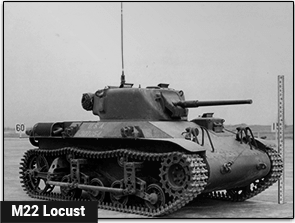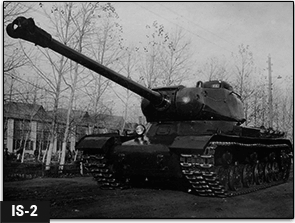Warspot.net is where history comes alive!
The dedicated site features articles about various aspects of military history and technology for readers of all interest levels.
Our authors include specialists who put a lot of effort into their articles. They tell you about little-known military conflicts, development and use of military vehicles, creation of iconic weapons, outstanding engineers, tactics of renowned commanders, heroic deeds of ordinary soldiers, and more.
You can find a few of these digest-featured vehicles available for purchase this month:
-
 VII
VII
IS-2 shielded Available as a reward or for purchase in the special Road to Berlin event, which runs until May 17.
-
 VII
VII
IS-2 With 7th Guards Independent Heavy Tank Brigade markings, the heavy tank is part of The Berlin Bundle five-vehicle package on sale until May 28; the vehicle's solo bundle offers start May 22.
-
 III
III
M22 Locust You get the spunky U.S. light tank for free when you purchase our 30 Days WoT Premium Account bundle — available until June 1.
Here is the Warspot Digest for May 2020 — all this and more on Warspot.net!
Warspot Digest: May 2020
 |
Maus: Superheavy Trophy The German superheavy Maus tank left a mark in the history of tank building. Developed as an assault tank, it was the heaviest in the world and practically invincible to enemy fire. In many ways, its fate was the same as another giant, the French FCM 2C, which holds the title of the world's largest tank to this day. Like the French heavyweight, the German tank never saw combat. In both cases, the tanks were destroyed by their own crews. Another similarity was the tanks became the subject of a careful study. [READ MORE] |
 |
AMX 50 120: Long Road to a Dead End At an unusual parade in Paris on July 14, 1951, the French military displayed all their newest vehicles adopted by the army or still undergoing trials. EBR armored cars and ARL 44 tanks drove along the Champs-Élysées. The parade concluded with the passage of two Foch tank destroyers and two AMX 50 tanks. Only a chosen few knew these tanks would not enter mass production and superior tanks were already on the drawing board. [READ MORE] |
 |
Light Tank M22: Steel Locust Thanks to John Walther Christie, the U.S.A. was the leader in airborne tanks before WWII, but with one caveat: not a single one of his vehicles was actually accepted into service. However, Christie's experiments resulted in a very good understanding of what an airborne tank should be. The idea of a tank with wings was quickly discarded in favour of a light tank that was attached under the fuselage of a heavy bomber or transport plane. This concept was used to make the Light Tank M22. [READ MORE] |
 |
IS-2: Tank with a Heavy Gun The tank that went into production under the name IS-85 was only a temporary solution. By the time GKO decree #4043 "On the production of IS tanks" was signed, the military already considered the 85 mm D-5T gun insufficient — as demonstrated by fighting new German tanks at Kursk. As a result, the IS-85, also known as IS-1, was produced in limited quantities of just over 100 units. The role of the main heavy tank of the Red Army in the concluding period of the war fell to the IS-122, also known as the IS-2. Interestingly, work on this tank began long before Kursk. [READ MORE] |
